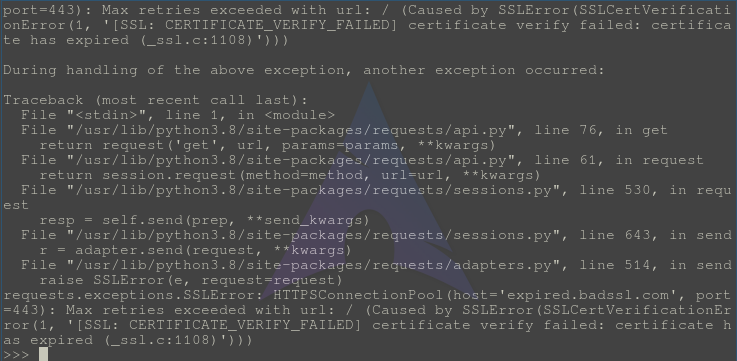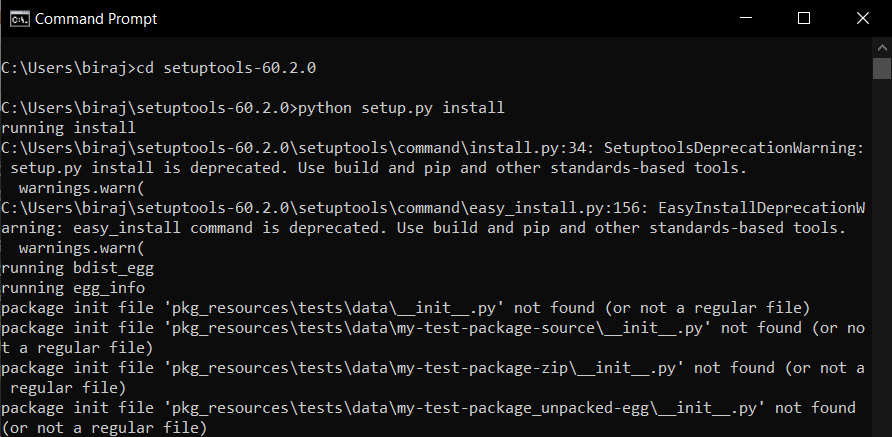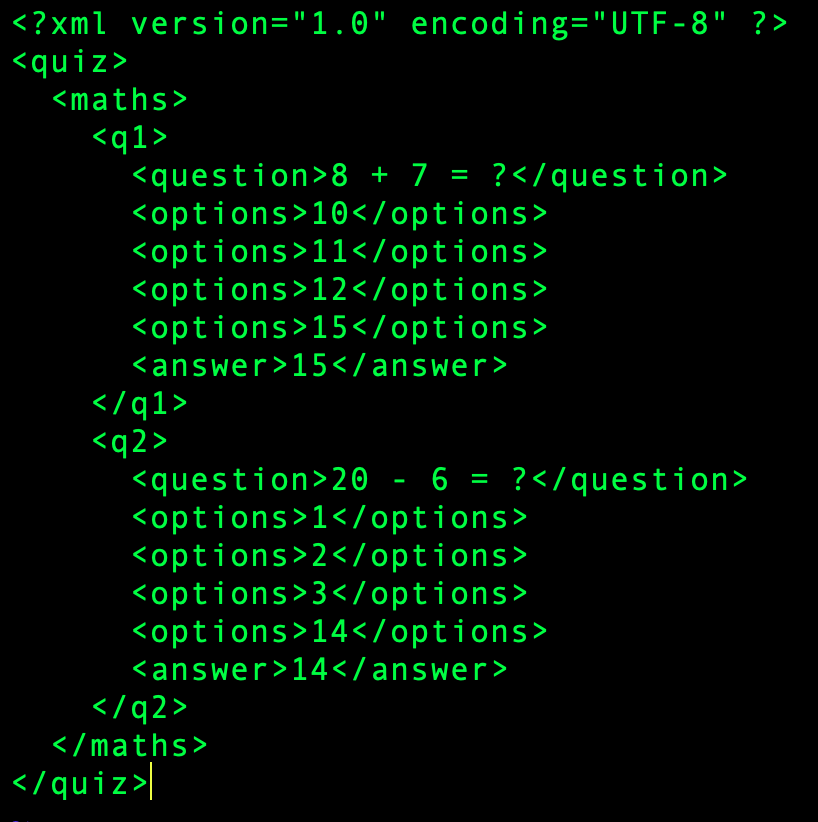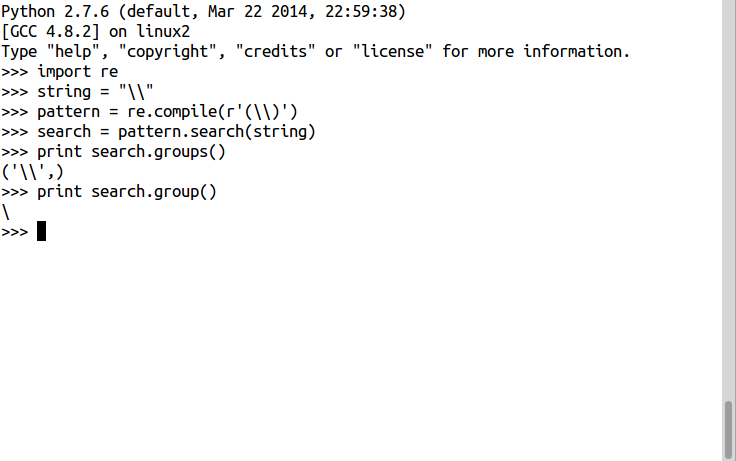Python SSL client
Python SSL client

Here is a detailed explanation of how to create an SSL (Secure Sockets Layer) client using the Python programming language:
What is SSL/TLS?

SSL (Secure Sockets Layer) and TLS (Transport Layer Security) are cryptographic protocols designed to provide secure communication between two parties over the internet. They ensure that any data exchanged between the two parties remains confidential and authentic.
Why use an SSL client in Python?
To communicate securely with a server, you can create a Python SSL client using the ssl module or third-party libraries like cryptography. This is important when dealing with sensitive information, such as financial transactions or personal data.
Creating an SSL client in Python:
You can use the built-in ssl module to create an SSL client in Python. Here's a basic example:
import socket
from ssl import CERT_REQUIRED
def create_ssl_client(hostname, port):
Create a socket objectsock = socket.socket(socket.AF_INET, socket.SOCK_STREAM)
Wrap the socket with SSL contextssl_context = ssl.create_default_context(certfile="path_to_your_cert.pem")
ssl_sock = ssl_context.wrap_socket(sock, do_handshake_on_connect=True)
Connect to the server using SSLssl_sock.connect((hostname, port))
return ssl_sock
Usage examplehostname = "example.com"
port = 443
ssl_sock = create_ssl_client(hostname, port)
In this code:
We import the necessary modules:socket for creating a socket and ssl for SSL functionality. The create_ssl_client function creates a socket object using socket.socket(). It then wraps the socket with an SSL context using ssl.create_default_context() and sets up some additional settings, such as requiring client certificates (CERT_REQUIRED). Finally, it connects to the server using SSL with the connect() method.
Using third-party libraries:
If you want more control over your SSL client or need support for advanced features like mutual authentication, consider using a third-party library like cryptography. Here's an example of how you can use it:
from cryptography.hazmat.primitives.asymmetric import tlsdef create_ssl_client(hostname, port):
Create a TLS context with client authenticationcontext = tls.ClientContext.load_cert_chain('path_to_your_cert.pem', 'path_to_your_key.pem')
Connect to the server using TLStransport = context.wrap_socket(socket.socket(socket.AF_INET, socket.SOCK_STREAM))
Set up some additional settings, like setting the hostnametransport.connect((hostname, port))
return transport
Usage examplehostname = "example.com"
port = 443
transport = create_ssl_client(hostname, port)
In this code:
We importcryptography and use its tls.ClientContext class to set up a TLS context for client authentication. We load the certificate and private key files into the context using load_cert_chain(). Finally, we connect to the server with the wrap_socket() method and set up additional settings like the hostname.
Remember to replace 'path_to_your_cert.pem', 'path_to_your_key.pem' with your actual certificate and private key files.
Python ssl wrap_socket
I'd be happy to help you with that!
ssl.wrap_socket() is a function in the ssl module of Python's standard library, which creates an SSL socket. This function allows you to establish a secure connection between two machines over the network.
The basic syntax for using ssl.wrap_socket() is as follows:
ssl_context = ssl.create_default_context()sock = socket.socket(socket.AF_INET, socket.SOCK_STREAM)
ssl_sock = ssl.wrap_socket(sock,
server_side=False,
certfile='path_to_your_cert_file',
keyfile='path_to_your_key_file',
ca_certs='path_to_your_ca_file',
ssl_version=ssl.PROTOCOL_TLSv1)
In the above example, sock is a regular socket created using the socket.socket() function. The ssl.wrap_socket() function takes this regular socket as its first argument and returns an SSL socket.
The other arguments to ssl.wrap_socket() are:
server_side: This is a boolean flag that determines whether the function should establish a client or server connection. certfile, keyfile, and ca_certs: These are strings that specify the paths to your SSL certificate, key, and CA certificates, respectively. You'll need these if you're using self-signed certificates. ssl_version: This is an integer value that specifies which version of SSL/TLS to use. For example, ssl.PROTOCOL_TLSv1 specifies TLS 1.0.
Once you have an SSL socket, you can use it just like a regular socket for reading and writing data. Here's an example:
while True: Read from the SSL socketdata = ssl_sock.recv(1024)
if not data:
break
Send data back to the serverssl_sock.sendall(data)
Close the SSL socketssl_sock.close()
In this example, we're reading and writing data from an SSL socket using the recv() and sendall() methods. Note that these methods will automatically handle encryption and decryption for you.
Remember to close the SSL socket when you're done with it to prevent resource leaks:
ssl_sock.close()
In conclusion, ssl.wrap_socket() is a powerful tool in Python's standard library that allows you to create secure connections over the network. With this function, you can establish client or server connections and handle encryption and decryption for yourself.
References:
https://docs.python.org/3/library/ssl.html
https://realpython.com/python-ssl-wrap_socket/
https://www.fullstackpython.com/ssl-python.html































